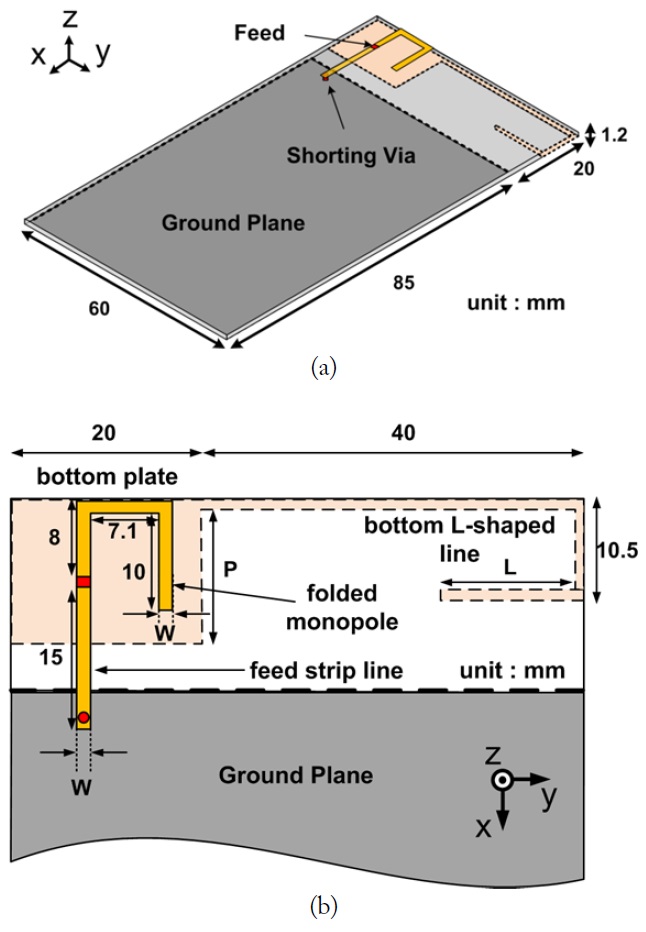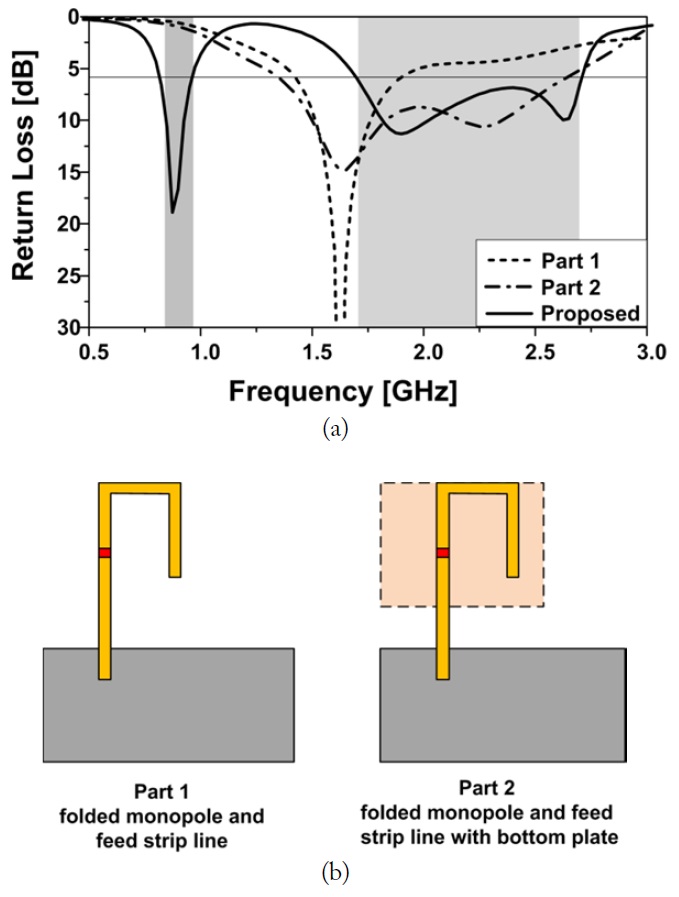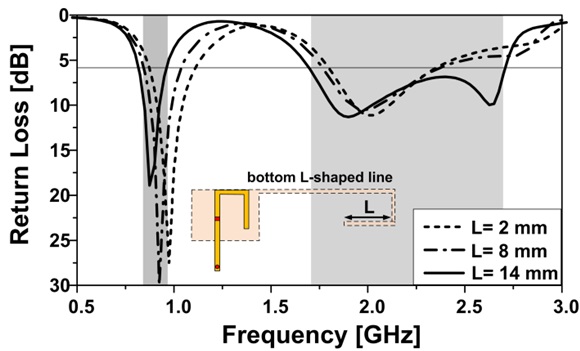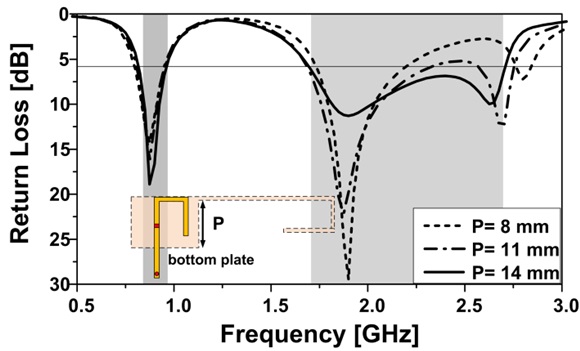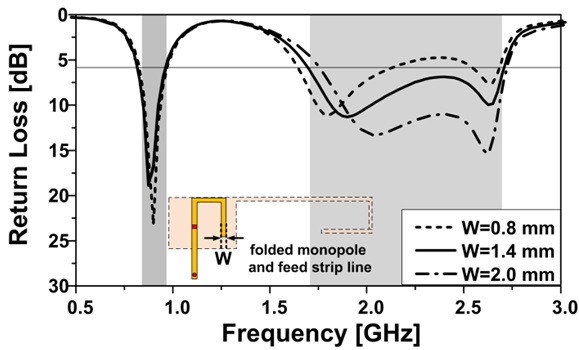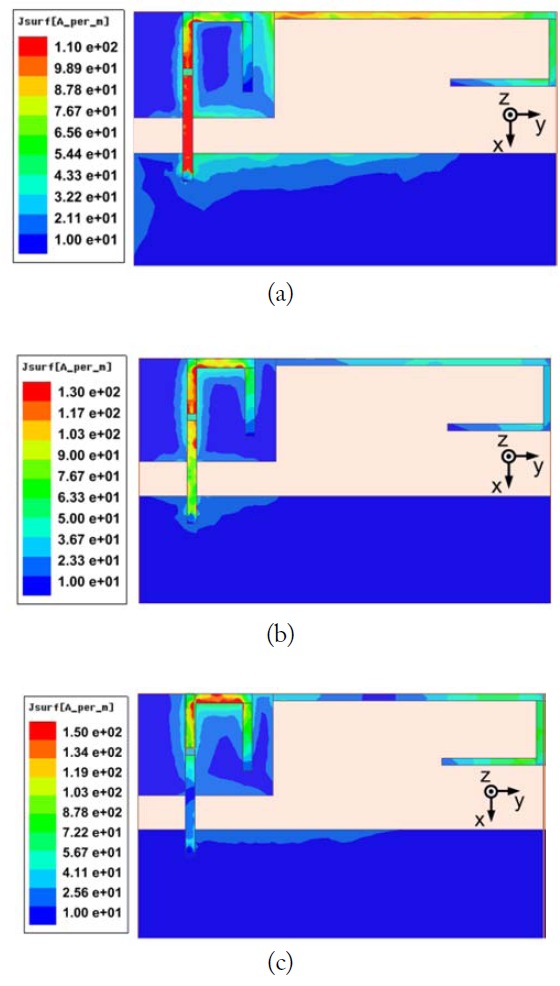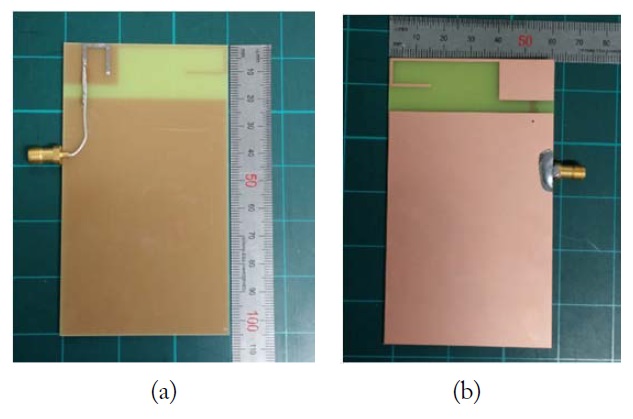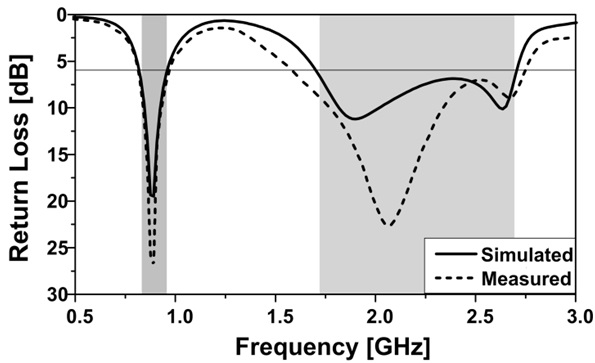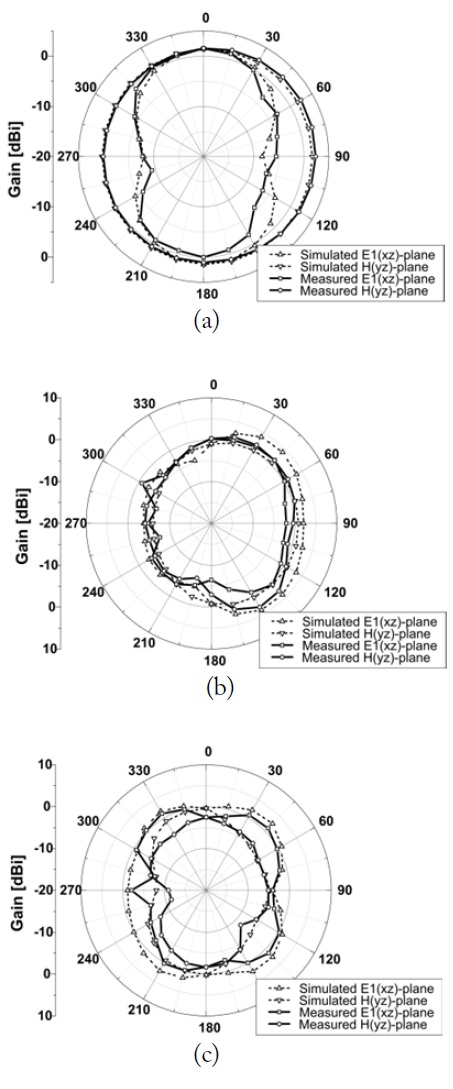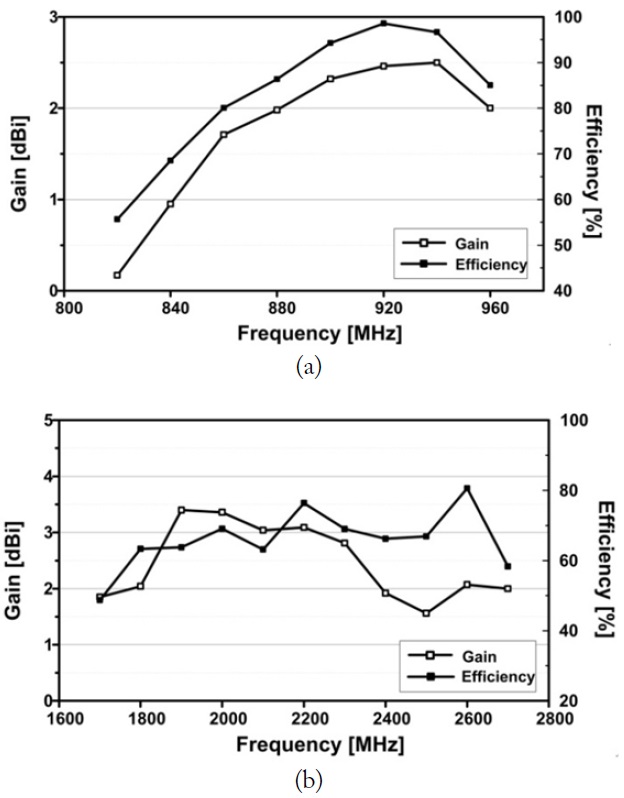



In the design of recent mobile handset devices, the miniaturization of internal elements is very important as the space allocated for each element is very small. Furthermore, the internal elements of mobile devices should have a simple configuration for easy integration. Therefore, small size and simple structure are required for the design of an internal mobile antenna. Moreover, the mobile antenna should have multiband and/or wideband characteristics as it is required to cover various communication services such as long-term evolution (LTE), Wi-Fi, global positioning system (GPS), and Bluetooth. Many researchers have investigated various types of antennas to realize the multiband characteristic with small size [1-4]. To overcome the size limitation, various mobile antennas using a coupled feed were proposed [5-7]. However, the height of these antennas is still too large for use in mobile devices. In addition, to improve the bandwidth performance, additional elements such as capacitors or inductors were used [8-10]. Consequently, the complex structure of such antennas could cause a problem for integration.
In this study, a simple planar multiband antenna operating over the GSM/UMTS/LTE heptaband services is proposed. The proposed antenna consists of a folded monopole on the top plane and an L-shaped line with a coupling plate on the bottom plane. The folded line operates in the high-frequency bands including GSM1800 (1,710-1,880 MHz), GSM1900 (1,850- 1,990 MHz), UMTS (1,920-2,170 MHz), LTE class40 (2,305- 2,400 MHz), and LTE class7 (2,500-2,690 MHz), and the Lshaped line operates in the low-frequency bands including GSM850 (824-894 MHz) and GSM900 (880-960 MHz). High Frequency Structure Simulator (HFSS) v.15.0.0 by ANSYS is used for simulating the proposed antenna.
Fig. 1(a) shows the geometry of the proposed multiband antenna. The antenna is designed on the FR-4 substrate (ε
III. DESIGN PROCEDURE AND PARAMETRIC STUDY
To demonstrate the operating principle of the proposed antenna, a comparative study between two prototype antennas and the proposed antenna has been conducted. Fig. 2 shows the simulated return loss characteristics of two prototype antennas (Parts 1 and 2) and the proposed antenna. The single structure, which consists of the folded monopole and feed strip line on the top plane (Part 1), generates two resonances in the highfrequency band. However, the impedance matching condition at approximately 2,300 MHz does not satisfy the 6-dB return loss bandwidth requirement. In the case of the folded monopole and feed strip line with an additional square plate (Part 2), the impedance matching in the high-frequency band is improved. This prototype antenna has a wide bandwidth of approximately 1,260 MHz (1,360-2,620 MHz). To generate additional resonance in the low-frequency band, an L-shaped line is added on the bottom plane. The L-shaped line, which is fed by coupling between the bottom square plate and the top feed line, has a wide bandwidth characteristic in the low-frequency band. The simulated 6-dB return loss bandwidth of the proposed antenna is 142 MHz (818-960 MHz) in the low-frequency band and 1,007 MHz (1,700-2,707 MHz) in the highfrequency band.
Parametric studies and optimization are performed for impedance matching at each resonant frequency and to determine the resonant frequency. Fig. 3 shows the simulated return loss characteristic for various lengths of the L-shaped line,
Fig. 6(a)-(c) show the simulated surface current distributions of the proposed antenna at each resonant frequency. For lowfrequency resonance, the bottom L-shaped line operates actively owing to the electromagnetic coupling between the bottom plate and the top feed strip line. The total length of the current path is around a quarter-wavelength in the low-frequency band (875 MHz). In Fig. 6(b), the total current path, which generates the resonance at 1,900 MHz, consists of a folded monopole and a feed strip line. The length of the total current path is approximately 40 mm, which is a quarter-wavelength at 1.875 GHz. However, in Fig. 6(c), the surface current is strongly distributed only on the folded monopole structure. As the resonant length becomes shorter than the case in Fig. 6(b), resonance occurs at 2,650 MHz.
Fig. 7 shows photographs of the implemented antenna. In the experiment, a 50-Ω coaxial line is used to excite the antenna. The outer and inner conductors of the coaxial cable are connected to the feed strip line and folded monopole structure, respectively.
Fig. 8 shows the simulated and measured return loss characteristics of the proposed antenna. The measured results agree well with the simulated results. However, the impedance matching level and resonant frequency at approximately 2.1 GHz do not agree well with the simulation because of fabrication errors. The measured 6-dB return loss bandwidth is 152 MHz (820-972 MHz) in the low-frequency band and 1,150 MHz (1,600-2,750 MHz) in the high-frequency band. The resulting bandwidth is wide enough to cover the desired heptaband services.
Fig. 9 shows the measured far-field radiation patterns of the proposed antenna at each resonant frequency. In Fig. 9, the E1-plane corresponds to the xz-plane and the H-plane, to the yzplane. At a low frequency of 875 MHz, the proposed antenna shows omnidirectional radiation patterns in the H-plane. At high frequencies of 1,900 and 2,650 MHz, the proposed antenna shows nearly omnidirectional patterns. The measured radiation patterns are suitable for practical mobile communication systems.
Fig. 10. shows the measured radiation efficiencies and gains of the implemented antenna. The measured radiation efficiencies are approximately 55%-98% and 48%-80% in the lowand high-frequency bands, respectively. The measured gain varies from 0.17 to 2.46 dBi in the low-frequency band and from 1.56 to 3.4 dBi in the high-frequency band. The measured average gain varies from -2.55 to -0.06 dBi in the low-frequency band and from -3.13 to -0.94 dBi in the high-frequency band.
In this study, a simple planar heptaband antenna with a coupling feed for 4G mobile applications is proposed. For easy integration in various mobile devices, the proposed antenna has simple structures on both the top and the bottom planes. The measured 6-dB return loss bandwidths are wide enough to cover the desired LTE/GSM/UMTS heptaband services. The antenna has nearly omnidirectional radiation patterns at each resonant frequency. Based on the measured results, one can conclude that the proposed multiband antenna is a good candidate for 4G multiband mobile applications.
